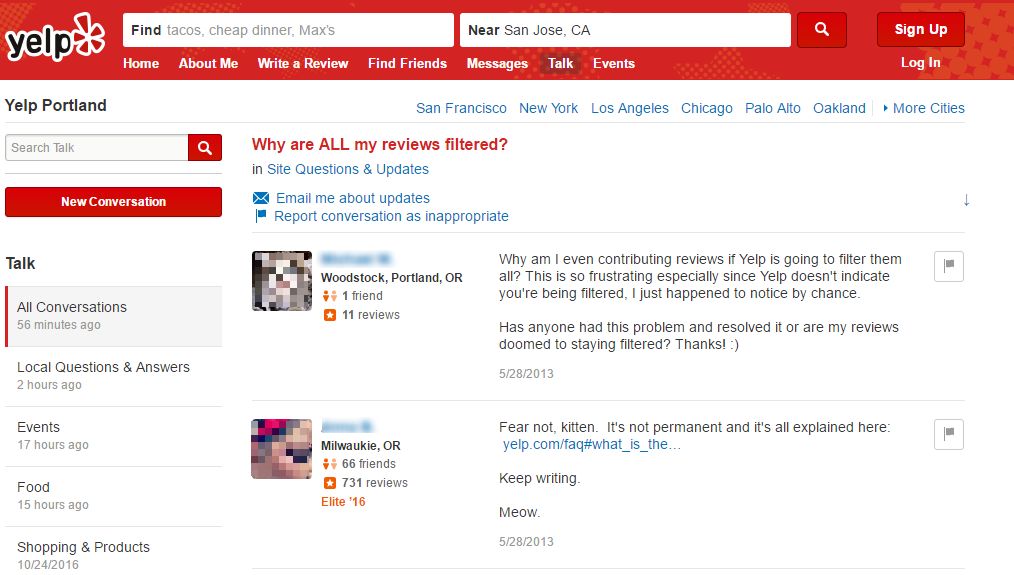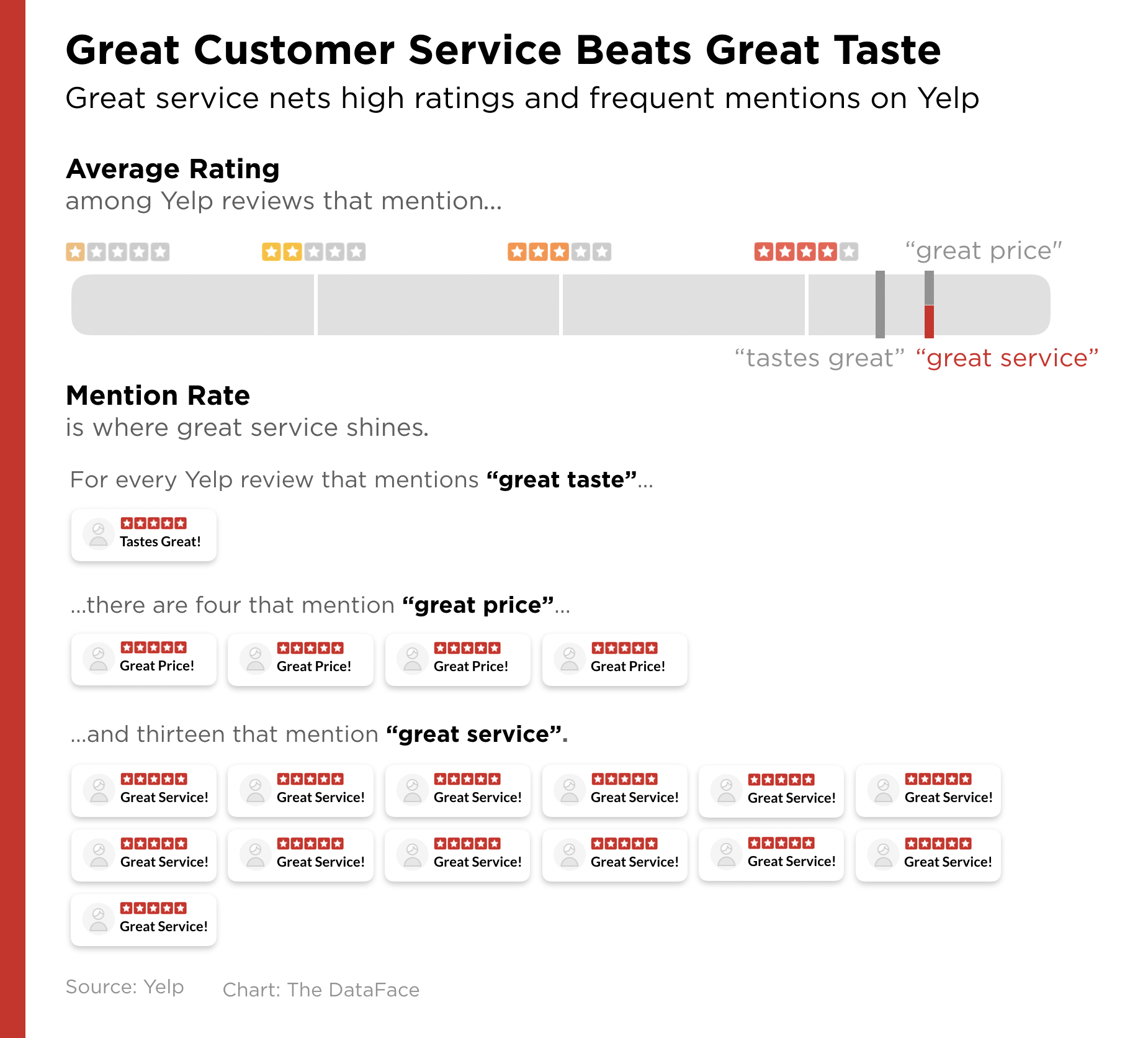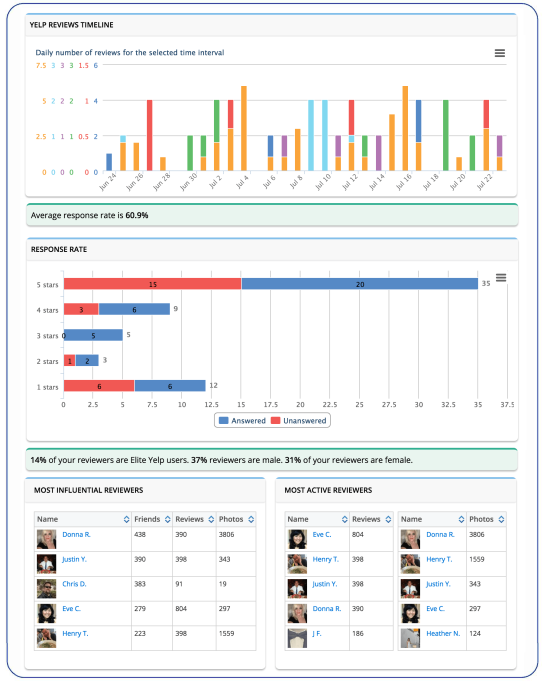Yelp continues to be a go-to source for customers to check out customer reviews of businesses. While the company has had its share of controversies, it still helps businesses in the long run, even when customers comment negatively. It also helps bring a strong impact beyond star ratings.
Back in 2013, Yelp received a patent on their algorithm that sorts those reviews everyone sees. How this works needs some comment, especially for those of you who still wonder how Yelp organizes their data.

For a business like yours to thrive, though, it’s time to do one key thing beyond depending on Yelp’s reviews and star ratings.
How Yelp’s Patent and Reviews Work
Through the use of algorithmic processes, Yelp surfaces relevant, interesting reviews for customers based on specific keywords. Understanding this takes away a lot of the mystery as to why certain positive (or negative) reviews end up dominating at the top of the page.
Much of it has to do with being in the shoes of customers. Think about what they do when searching for a specific business on their smartphones. For restaurants, they may prefer to search for a place with a unique atmosphere on a Friday night. When they search on a weekend, it may be more about looking for brunch and larger seating capacity.
It’s Yelp’s review tagging algorithms helping to sort the company’s “Places of Interest” section. It’s all based on what people say in those reviews from recent weeks or days.
Whenever a review is submitted to Yelp, they scan each one based on phrases used. These phrases might be as simple as one word, or a lengthier sentence. If a reviewer says something akin to “I’m happy with the vegetarian selection,” it will go a long way in how the business is eventually perceived.

Other Properties of the Reviewer
Star ratings are also taken into consideration in Yelp’s algorithms. However, they also go by other elements like how old the reviewer is. This alone helps better calculate how to tag the business in relation to targeting certain groups.
The way Yelp calculates age is based on what people say about their own age or comments about a place that is popular with a particular demographic. Location is even taken into account here for more localized targeting.
Yelp additionally sorts out reviews based on other keywords that might interest certain customers. A reviewer might mention a mortgage company is popular in their area, great from first-time homebuyers, or caters to those with special circumstances.
Keep in mind, these keywords only affect the particular business being reviewed. If the same person makes a similar comment on another business that doesn’t relate, it won’t affect the tags of that other place.
What Your Business Can Do with Yelp Reviews
As you can see, reviews and star ratings do a lot more than impacting the perception of how customers feel about you. Negative reviews are a fact of life at Yelp, something you’ve probably had to grapple with from time to time.
One thing about negative Yelp reviews is they aren’t always a bad thing when properly sorted with positive reviews. Many people look at negative reviews as proof the business isn’t faking all the glowing comments. It often helps a customer decide whether a business is truly legitimate and what their strong suits are.
If you’re still baffled on how to deal with negative Yelp reviews, the best action is to interact with those who write them. Doing so gives you more control over how customers perceive you rather than completely relying on algorithms.
It’s proof the importance of understanding when to augment and when to automate human interaction is key in an algorithmic world.
Handle a Negative Review with Your Own Comments
Marketing experts have written for years about how to handle negative Yelp reviews. Things haven’t changed much in the last eight years since negative Yelp reviews became such a concern.
You’re going to get some negative reviews, no matter how hard you try to avoid them. When they do happen, responding personally makes a big difference in how others reading them perceive your business. Who should be responsible for replying to them, though?
Hubspot once said it all depends on business size. Smaller businesses may mean the owner responding personally in the review. Larger businesses may have to hire specific people to take care of those responses. These can be assigned to someone like a customer success team, a group of marketers, or even hiring an external agency.
The way forward on handling a negative review is nearly an art form. A more personal response directly from the owner goes a long way here, first, giving an opportunity toward customer recovery. From there, it offers a chance to bring in new customers who are impressed with your personal responses. And, best of all, it brings real transparency.
Some Other Tips for Responding to Yelp Reviews
One thing to remember about responding to a negative review is it needs to be timely. When you see a negative review, don’t wait for weeks to send a response.

Another good tip is to refer to the reviewer by their first name to bring more personalization. Don’t treat them like a number, and offer a sincere apology for what the reviewer claims bothered them.
Most importantly, don’t try to pick a fight with those who may be deliberately negative. Only those with legitimate complaints are the ones to respond to. The reviews with true constructive criticism are also going to make Yelp compile more negative reviews at the top, allowing your personal comments to gain more exposure.
Always mention what you’ll do to correct any wrongs, whether that’s a discount, or hiring better people to adhere to customer service. You should also mention whatever went wrong won’t happen again.
Also, Respond to Your Positive Reviews
Don’t just think negative reviews are the only thing you have to respond to. Look around at other review sections for other businesses. One thing you’ll probably notice is companies often take time to respond to positive comments as much as negative ones. Even major corporations do this nowadays on box store review sections.
A response to positive comments helps build brand loyalty and attracts new customers. What makes an effective response, though, is to not just give the same response to everyone else. Be sure to read the entire review and make comments about specific positive things said.
And, always offer to do more above what was already praised about you. You might want to reach out to these people like brand ambassadors and offer to give them swag or special discounts on certain items.
How can you make responding to customer reviews like this easier on your time?
Manage Your Digital Profiles at Scale
At Synup, we’ve managed to create a platform to help you engage with and attract more customers through the use of your digital profiles. The reputation management side of our software allows you to keep on top of all your customer reviews, choosing which review automated replies and which to give a personalized touch to. Our Yelp integration makes it easy for you to manage and respond to all of your Yelp reviews in one dashboard along with 40+ other listing sites.
To learn more about how this works, contact us to consider a demo.


